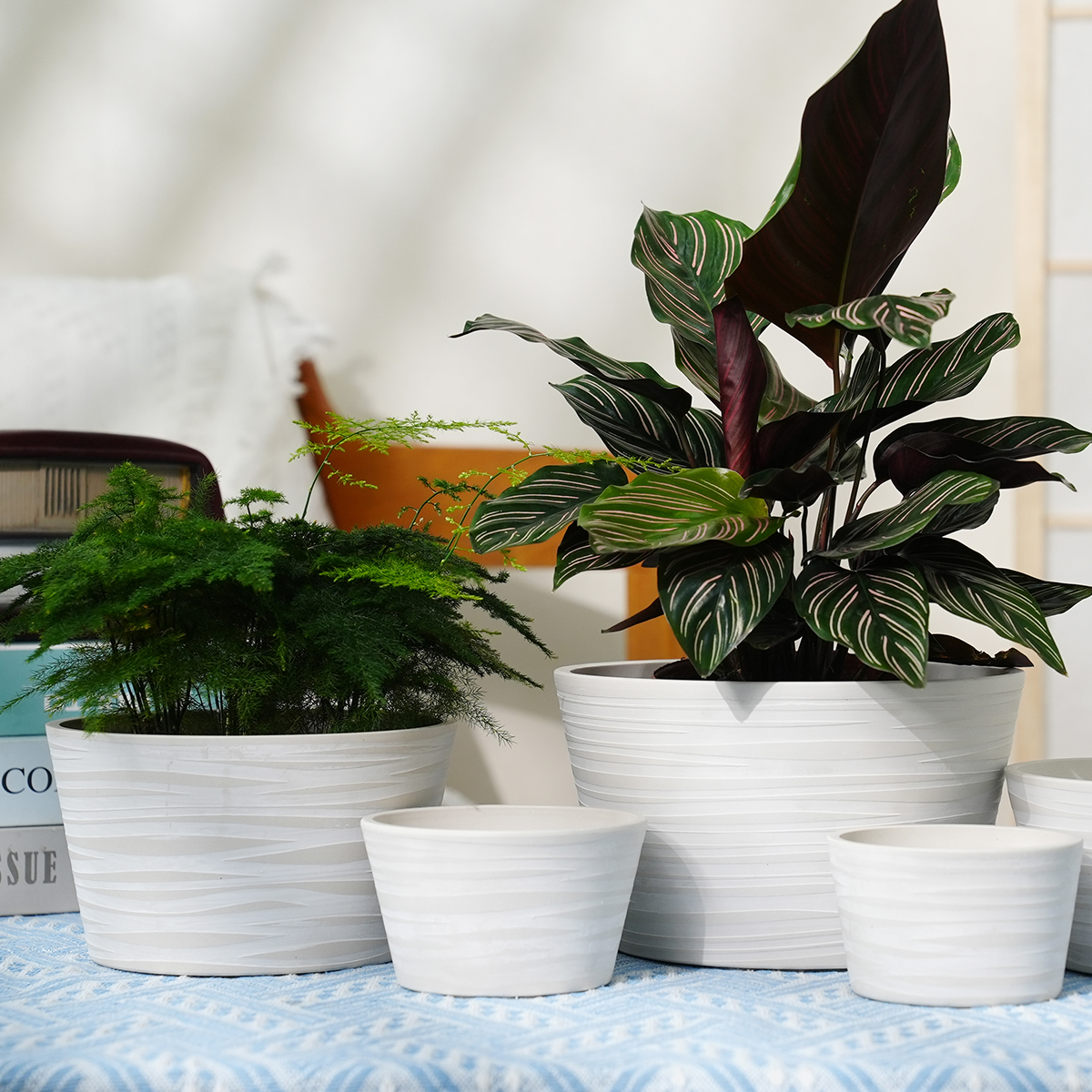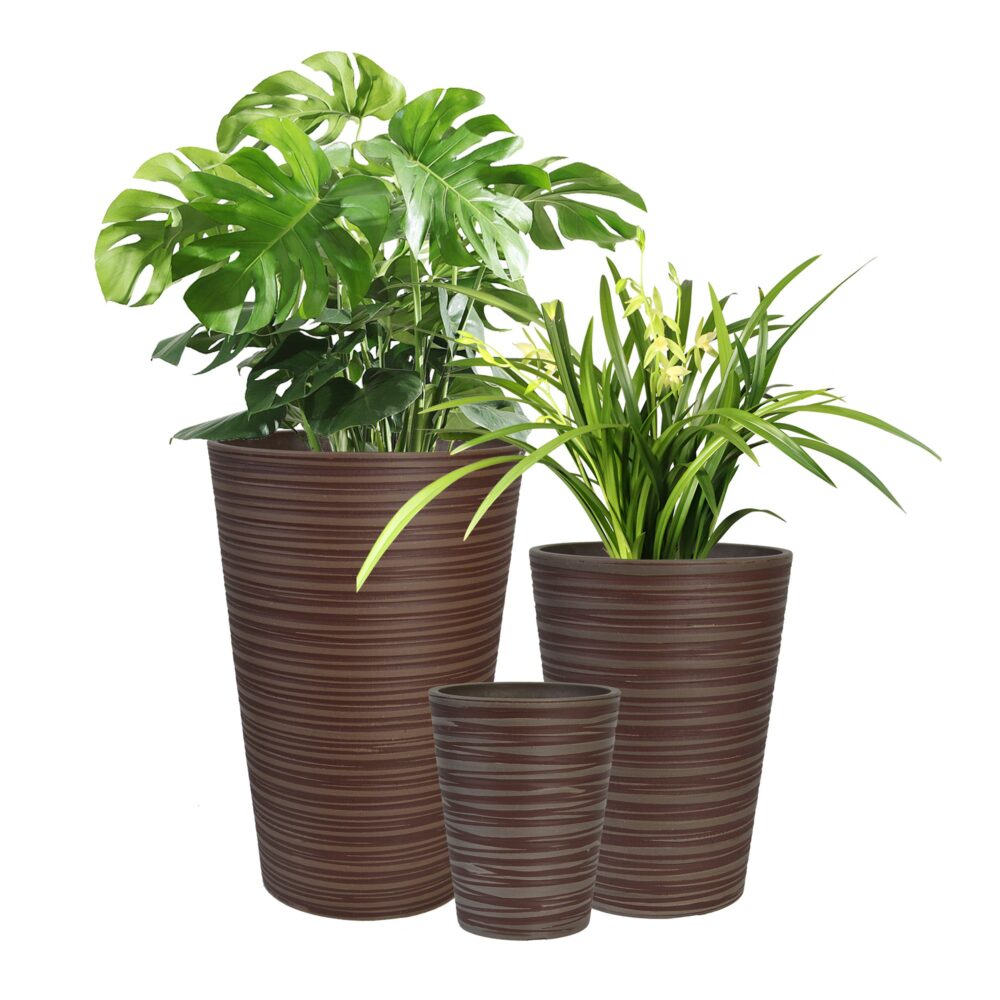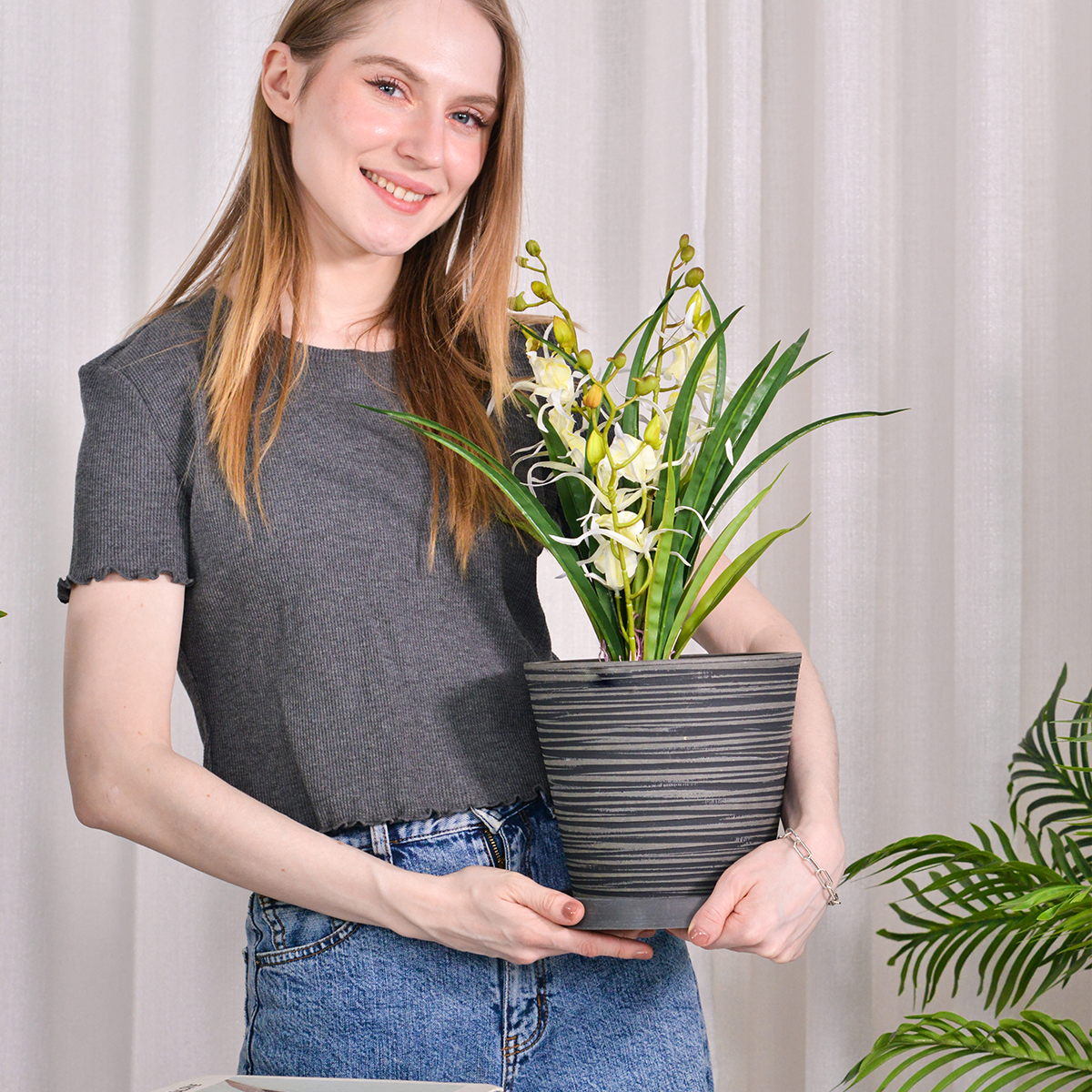Large Outdoor Planter Materials: Pros and Cons Comparison
Large outdoor planters serve as focal points in garden design, on patios, balconies, or at entryways. They hold significant amounts of soil and are constantly exposed to the elements – sun, rain, snow, ice, and temperature fluctuations. Because of this, the material you choose dictates not only the aesthetic but also the durability, weight, maintenance, and overall lifespan of the container.
Understanding the advantages and disadvantages of common materials is key to selecting large outdoor flower planting boxes that meet your needs and last for years.

Here’s a comparison of different materials for large outdoor planters:
Ceramic and Terracotta
- Pros:
- Classic, timeless aesthetic (Terracotta offers a warm, earthy look).
- Glazed ceramic provides a wide range of colors, patterns, and finishes to match any style.
- Terracotta is porous, allowing some air circulation to roots (can be a pro in wet climates).
- Cons:
- Heavy, especially in large sizes, making them difficult to move.
- Highly susceptible to cracking and breaking in freezing temperatures, as absorbed water expands. Glazed finishes can chip or peel.
- Terracotta dries out quickly, requiring more frequent watering in hot weather.
- Can be expensive for large, high-quality pieces.
Plastic and Resin
- Pros:
- Lightweight, making even large planters relatively easy to move.
- Wide variety of styles, colors, and sizes available, often mimicking the look of other materials.
- Generally more affordable than ceramic, stone, or fiberglass.
- Resistant to rot and rust.
- Cons:
- Quality varies significantly; cheaper plastic can look artificial, fade in UV light, and become brittle and crack in cold.
- Large plastic planters can sometimes lack the visual weight or stability of heavier materials in windy conditions.
- Non-porous, which can be a con if drainage isn’t perfect or watering is excessive (risk of root rot).
Wood
- Pros:
- Offers a natural, warm aesthetic that blends well in garden settings.
- Highly customizable – can be built to almost any size or shape.
- Materials like cedar, redwood, teak, or pressure-treated wood offer better resistance to rot and insects than common woods.
- Can be stained or painted to match desired colors.
- Cons:
- Requires regular maintenance (sealing, staining, or painting) to prolong lifespan and appearance.
- Even rot-resistant woods will eventually break down over time, especially in constant contact with moist soil.
- Can warp, crack, split, or expand/contract with moisture and temperature changes.
- Can be heavy, depending on wood type and size.
Metal
- Pros:
- Offers a modern, sleek, or industrial aesthetic.
- Very strong and durable; won’t crack in freezing temperatures.
- Materials like aluminum, stainless steel, or Corten steel offer good resistance to rust (Corten develops a stable, protective rust layer).
- Cons:
- Can heat up significantly in direct sun, potentially overheating plant roots.
- Heavy (especially steel or Corten), making large sizes difficult to move.
- Untreated ferrous metals will rust, staining surfaces below.
- Can be expensive, particularly stainless steel or custom pieces.
- Can dent.
Stone and Concrete
- Pros:
- Extremely durable and long-lasting, often weathering beautifully over time.
- Very heavy, providing exceptional stability in windy locations.
- Offers a substantial, permanent, and classic or modern look depending on the finish.
- Won’t degrade from UV or rust.
- Cons:
- Extremely heavy, making even empty large planters difficult to position; often requires specialized equipment to move when filled.
- Expensive, especially natural stone.
- Concrete can crack in extreme freeze-thaw conditions if not properly manufactured or if drainage is poor.
- Limited design flexibility once cast or carved.
Fiberglass (Often categorized separately, but worth noting)
- Pros:
- Excellent durability and weather resistance; resists freeze-thaw, UV, rot, and rust.
- Relatively lightweight compared to stone, concrete, or large ceramic, making large sizes easier to handle.
- Available in a vast range of shapes, sizes, and finishes, often convincingly mimicking other materials.
- Strong and non-porous.
- Cons:
- Can be expensive upfront.
- Quality varies; look for sturdy construction.
Choosing the Right Material for You
The best material for your large outdoor planters depends on balancing your priorities:
- For Maximum Durability & Low Maintenance: Fiberglass, Concrete, Stone, or high-quality Metals are top choices.
- For Lightweight & Affordability: High-quality Plastic/Resin is the best option.
- For a Natural Aesthetic: Wood is the prime choice, but requires maintenance.
- For Specific Style: Ceramic (glazed), Metal, and Concrete offer distinct looks.
- For Cold Climates with Freeze-Thaw: Avoid unglazed terracotta and lower-quality ceramic. Fiberglass, Metal, and quality Concrete/Plastic are better bets.
By considering the pros and cons of each material in the context of your climate, budget, desired aesthetic, and willingness to perform maintenance, you can select large outdoor planters that are both beautiful and built to last against the elements.
Planter 5 in W / 8 in W / 12 in W or Indoor Outdoor Plants, Modern Decorative Plant Pots with Drainage Hole, Decorative Flower Pots
By greenship-seo|2025-04-10T06:37:58+00:00January 16, 2025|Categories: Hand-carving Series|Tags: Decorative Flower Pots|
KC3-09k
By greenship|2024-08-16T06:24:36+00:00August 16, 2024|Categories: Hand-carving Series|
HS
By greenship|2024-08-13T06:45:17+00:00August 13, 2024|Categories: Hand-carving Series|
Modern Plant Pots with Drainage – Indoor & Outdoor Use (6″ Widths)
By greenship-seo|2025-04-10T06:29:43+00:00February 6, 2025|Categories: Hand-carving Series|Tags: Decorative Flower Pots|
k2-21G
By greenship|2024-08-13T06:17:26+00:00August 13, 2024|Categories: Hand-carving Series|
K2-11T
By greenship|2024-08-13T04:21:25+00:00August 13, 2024|Categories: Hand-carving Series|







